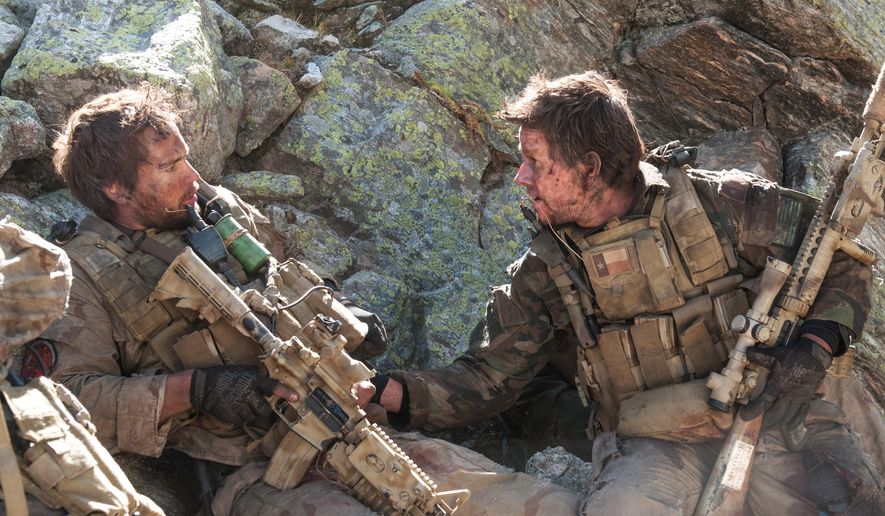Don’t expect any big twists from the story in “Lone Survivor.” The sad, true ending is spoiled in the title.
The real surprise is the way this minimalist modern war film evolves over the course of its two-hour running time: What starts out slowly, as a perfunctory, earnest war movie about elite Navy SEALs on a mission to kill a Taliban bigwig in Afghanistan grows unexpectedly into one of the most harrowing depictions of contemporary combat in recent memory — not in spite of its earnestness, but because of it.
“Lone Survivor” is an action picture and a war film, but it might be best described as a band of brothers movie — about the closeness and camaraderie among soldiers in the field. It begins with a string of grainy, documentary clips from real-world SEAL training exercises, emphasizing the mental toughness that the job requires, as well as the fraternity it engenders among the few who complete the course.
Both are put to the test when four SEALs are sent to capture or kill a particularly violent Taliban commander operating in the mountains of Afghanistan. What should be a relatively simple job is complicated when the four soldiers encounter a group of civilians who are likely to be Taliban informants.
The movie’s first hour offers a series of exhibits on the life of a deployed solider: Writer/director Peter Berg takes viewers on a miniature tour of duty, offering depictions of activities such as mission briefings and friendly hazing. Mr. Berg comes from a military family, and his loving re-creations of troop life are perhaps overly detailed at times. But he also offers something rare in a star-driven action movie — an unusually faithful and respectful look at real-life experiences of soldiers in the field.
Mr. Berg also uses the long opening to build up the characters of the four service members at the center of the story — Michael (Taylor Kitsch), Danny (Emile Hirsch), Matt (Ben Foster), and Marcus Luttrell (Mark Wahlberg), whose book about the mission served as the basis for the film. They make a close unit, and their friendship with one another eventually extends to the audience, who become a sort of silent part of the team.
That makes the extended battle sequence that takes up the bulk of the film’s second half all the more gripping, and painful, to watch. Mr. Berg’s plain, almost journalistic direction makes the movie’s first hour underwhelming. But the same sensibility makes the lengthy shootout between the quartet of SEALs and a sizable Taliban force utterly riveting.
Suddenly, details start to matter. Close-in and chaotic, the movie’s mountainside siege has to rank among the most intense and realistic war fights ever seen on screen. Instead of dazzling viewers with impossible feats, Mr. Berg highlights the tense confusion involved in such a battle — the emphasis is on cover, target acquisition, shot placement and squad movement rather than showy violence. It’s not about spectacle. It’s about survival.
It’s also about fighting for one’s fellow soldiers. Mr. Berg’s telling of the story plays down larger political motivations; once on the battlefield, he seems to suggest, the broader causes of any war are always less important than the individual lives at stake.
TITLE: “Lone Survivor”
CREDITS: Written and directed by Peter Berg
RATING: Rated R for violence, battle gore, language
RUNNING TIME: 121 minutes
MAXIMUM RATING: FOUR STARS




Please read our comment policy before commenting.